The straight forward answer is that you cannot tell how the JVM was launched.
But for the example use-case in your question, you don't really need to know how the JVM was launched. What you really need to know is whether the user will see a message written to the console. And the way to do that would be something like this:
if (!file.exists()) {
Console console = System.console();
if (console != null) {
console.format("File doesn't exists%n");
} else if (!GraphicsEnvironment.isHeadless()) {
JOptionPane.showMessage(null, "File doesn't exists");
} else {
// Put it in the log
}
}
The javadoc for Console, while not water tight, strongly hints that a Console object (if it exists) writes to a console and cannot be redirected.
Thanks @Stephen Denne for the !GraphicsEnvironment.isHeadless() tip.
